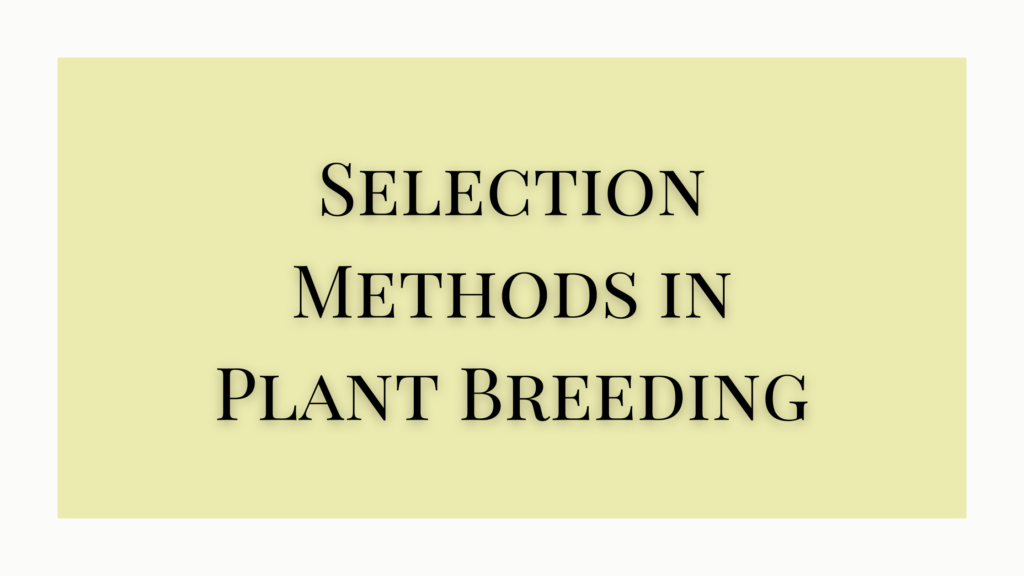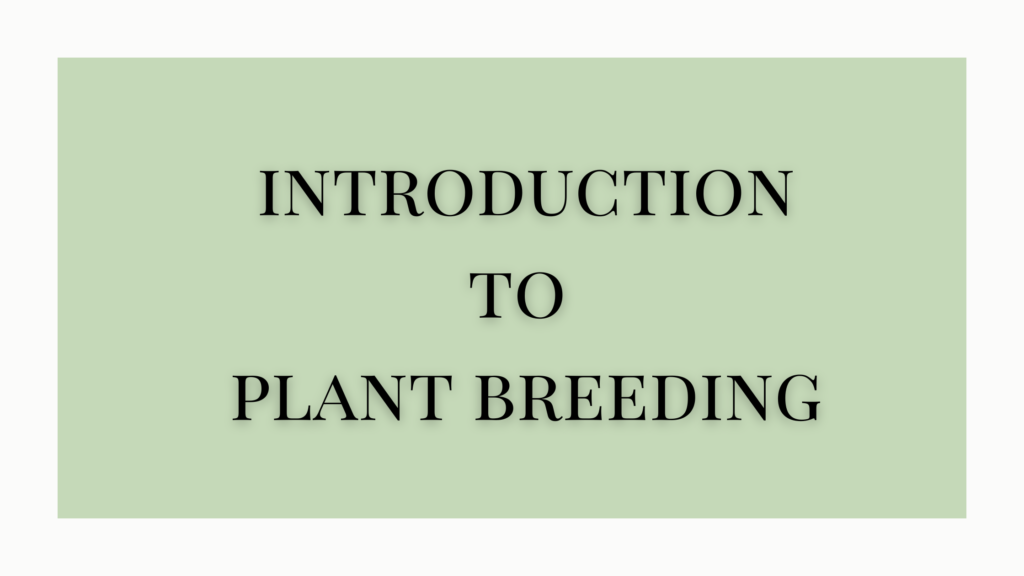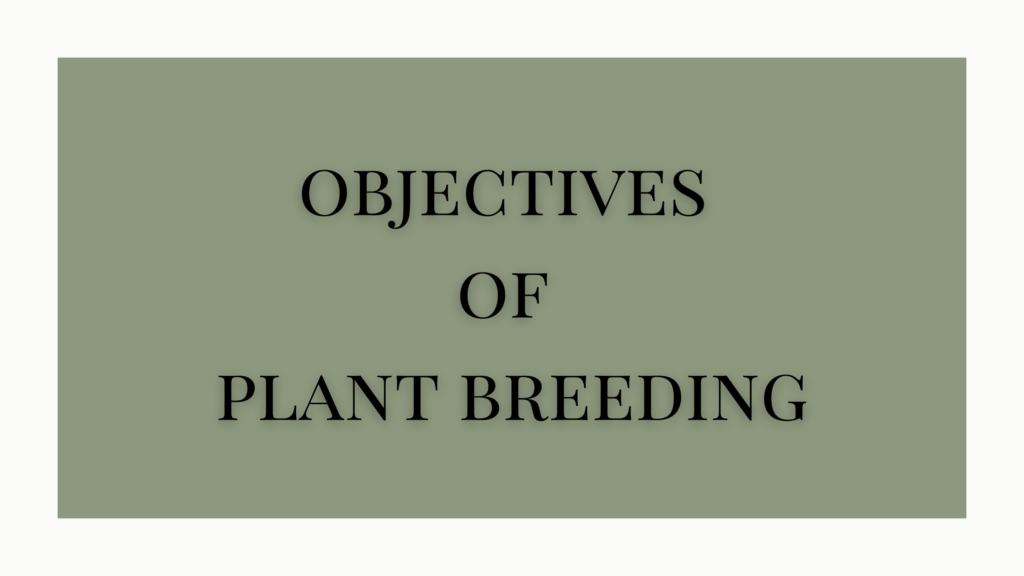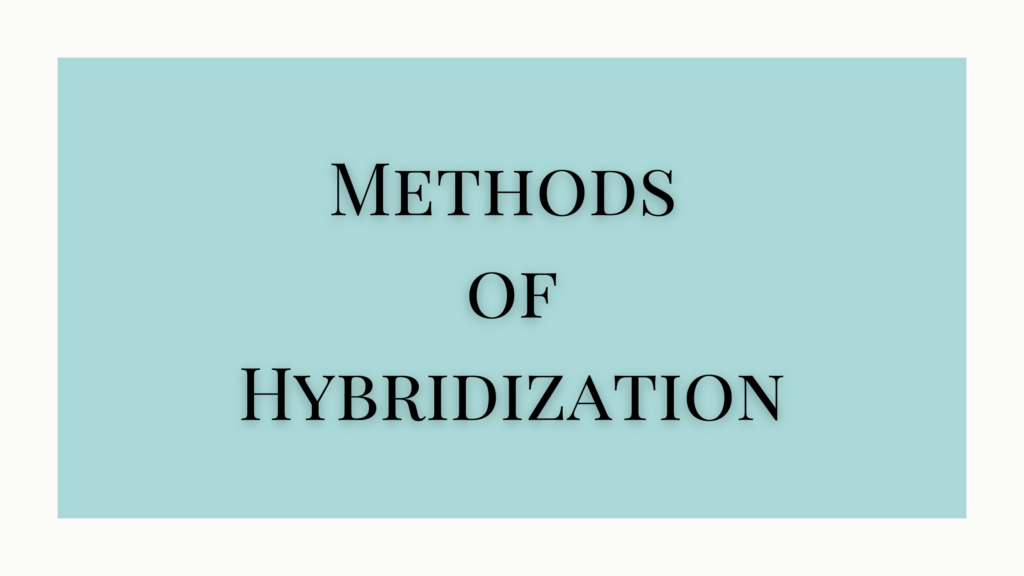Plant selection is the process where plant materials of desirable characteristics are chosen. This is one of the most effective and easiest methods of plant breeding.
Selection Methods In Plant Breeding
There are mainly two methods followed for this- natural and artificial selection. The latter is further divided into three- mass selection, pure line, and clonal selection.
Natural Selection
This is a continuous and autonomous process that is influenced by natural factors. According to Darwin’s theory of natural selection, overproduction of plants creates a struggle for existence in them and the environment induces several new variations in them that ensure that certain plants become more suitable and others become less adapted to live in particular prevailing environmental conditions.
As a result of natural selection, the suitable and fittest varieties survive while the weak and unfit plants do not persist and are eventually eliminated. This is known as the survival of the fittest.
Due to natural selection, the plant species is gradually adjusted towards advantageous directions. The cultivated crop has probably evolved from wild types through natural selection. Certain climatic and regional raises are the result of this process.
Artificial Selection
Plant breeders choose certain individual plants of good quality from mixed populations to take quantitative as well as qualitative yields from them. This is known as artificial selection.
In other words, artificial selection is a process that involves the selection of certain individual plants from a mixed plant population having both desired and undesired qualities. Artificial selection can be divided into three categories.
Mass Selection
Mass selection in plant breeding involves a large number of plants having similar phenotypes. Their seeds are collected and mixed to form a new variety. The grown plants are chosen as per their appearance or phenotype. This method is used for desired characters that are visible and is widely used in plants that are cross-pollinated.
The characteristics that are used to choose plants under mass selection are plant height, grain color, size of the grains, disease resistance, tillering abilities, lodging resistance, shattering resistance, etc. Sometimes, the yield of the plant may also be used as a criterion for selection.
Mass selection has been important in plant breeding for cross-pollinated species. In cross-pollinated varieties inbreeding ( a cross between closely related species) must be avoided since it leads to loss in vigor and yield. Since there are several plants selected in mass selection, the seeds are mixed to raise the next generation. So inbreeding is avoided or kept to a minimum.
Mass selection has only limited applications in self-pollinated crops.
The procedure of mass selection
In mass selection, a group of plants that are selected from the yield, either during or after harvesting, are thrashed together. The mixture of seeds thus obtained is called mass and thus the name mass selection.
Sometimes seeds with extreme chargers are selected directly. The mixture of seeds is sown to raise new crops and the same process of selection is repeated until there is a complete uniformity reached within the crops and their characters.
The entire process takes about 8 years or more, depending on the type of plant. The process may be modified by the breeder according to the needs. The general procedure of mass selection is as follows.
- In the first year, the plants or seeds having the desired characteristics are collected. The number of plants selected may vary from 200-2000. These seeds are sown and grown in the same area to raise the next generation.
- During the second year, the composite seeds of each mass selection are sown in isolated fields to grow the progeny.
- In the 3rd, 4th, and 5th years, the selected mass is subjected to repeated yield and trials and is compared with the yield of the old variety.
- In the 6th, 7th, and 8th years, the selected varieties are sent to different regional research stations and are grown there to determine the adaptability and yield in different regions.
- At the end of the 8th year, the variety is multiplied, named, recommended, and released for general cultivation.
Limitations of Mass Selection
- It applies only to those crops that show some degree of heterozygosity associated with cross-pollination.
- The application of mass selection is limited to self-pollinated plants.
- Since there is no check on cross pollination it could cause further heterozygosity.
- The superior variety is not easily separated from the slightly inferior variety.
Pure Line Selection
Pure line selection is a process where the chosen plants have the same genotype as the plant from which the plant is derived. Here the parent plant is homozygous and is self-fertilized to produce the pure line progeny having the same genotype.
Johannson (1903) was the first to introduce the term pure line selection where the progeny of a single homozygous or self-pollinated plant. Pure line selection in plant breeding has been the most commonly used method for self-pollinated plants.
The procedure of pure line selection
The method of production of a variety of pure line selection consists of testing the progenies of a single individual plant from the mixed population of naturally self-pollinated crops. It takes nearly 9-10 years to produce a variety. The general procedure is given below.
- 50 or more plants of desired quality are selected in the first year from a mixed population of crops. They are collected at the time of harvesting. The seeds are collected separately and are numbered.
- Progenies from individual plants are grown separately with proper care. The poor, weak, and ineffective progenies are discarded.
- Diseases such as epiphytotics may be created to test the progenies for disease resistance. AN artificial epidemic is created by inoculating the suspension of spores of pathogens on the plant body. The superior progenies are harvested separately.
- In the 3rd year, each experimental strain of the second year is grown in 4-5 rows, instead of a single row. The superior strains are maintained while the diseased and undesired plants are removed from the field. The seeds of each strain are collected from these after harvesting.
- In the subsequent years (years 4 to 6) the yield trials are made and finally, 2-3 superior strains are selected as improved strains. The inferior and diseased ones are eliminated.
- By the 7th year, the finally selected seeds are grown separately, multiplied, and sent to various research stations.
- From years 8 to 10, these seeds are grown at these research stations and are compared for their yield and adaptability under various conditions. Finally, one or two strains are selected, named, and released for general cultivation.
Clonal Selection
Clonal selection is the process of choosing a clone or an exact copy of a plant variety from a group of mixed populations of crops that are propagated asexually or vegetatively. This type of selection helps select plants that are uniform, identical, and have a wider range of adaptations.
A clone is a group of plants produced through vegetative reproduction from a single plant. Vegetatively propagated crops are called clonal crops. All clones have the same genotype as the parent plant.
As a result, they are identical to each other in their genotype. Clones can be maintained indefinitely through vegetative reproduction. Therefore clones are theoretically immortal (stable) but clones usually degenerate into infections and may become extinct due to susceptibility to diseases. Generally, clones are highly heterozygous and show a severe loss in vigor due to inbreeding. Genetic variation may arise with a clone.
Characteristics Of Asexually Propagated Crops
Some crops and a vast majority of horticultural crops are propagated asexually. The common crops that are asexually propagated include sugar cane (Saccharum officinarum), potato (Solanum tuberosum), sweet potato, colocasia, yams, mint, ginger, turmeric, banana, etc. Many fruit trees such as mango, apple, pear, peach, litchi, etc are also asexually propagated.
Such plants show reduced flowering and seed set or have no flowering at all. They reproduce asexually or vegetatively and produce progeny identical to the parent genotype since they are reproduced from the vegetative cells.
The advantage of asexual reproduction is that it preserves the parent genotype. They are not dependent on the homozygosity or heterozygosity. Reproduction through self-pollination preserves the homozygosity of the genotype and gives rise to a pure line.
- A great majority of them are perennials. Eg. Sugar cane, fruit trees that live for many years, and flower every year. The annual crops are mostly tuber crops such as potato, sweet potato, etc.
- Most of them have reduced flowering and seed formation.
- The crops are highly heterozygous and show inbreeding depression.
- The vast majority of cases are polyploids such as sugar cane, sweet potato, potato, or polyploid species.
- Several species are interspecific hybrids such as bananas, sugar cane, etc.
Such plants are chosen for the clonal selection method. Depending on the plant species, different plant parts are chosen for generating clones. Different plants and their type of propagating parts are,
- Stem cutting- Sugar cane, betel, pepper, rose, jasmine, etc.
- Underground stem cutting- Colocasia, yam, ginger, turmeric
- Runners- Grasses, oxalis, etc.
- Sucker- Banana
- Stolons- Pineapple
- Tuber- Potato
- Bulbs- Garlic, Onion, etc
- Bulbils- Dioscorea
- Grafts and buds- Mango, citrus, apple, rose, etc.
The selected plants are grown by vegetative methods and then they are compared with normal varieties. The diseased and poor-quality clones are removed and the best clones are selected and they are sent to different regional research stations.
There they are grown to determine their yield and adaptability under particular environmental conditions for three years. This time duration may change up to 10 years depending on the species. Finally, the bet clones are named, multiplied, recommended, and released for cultivation.




